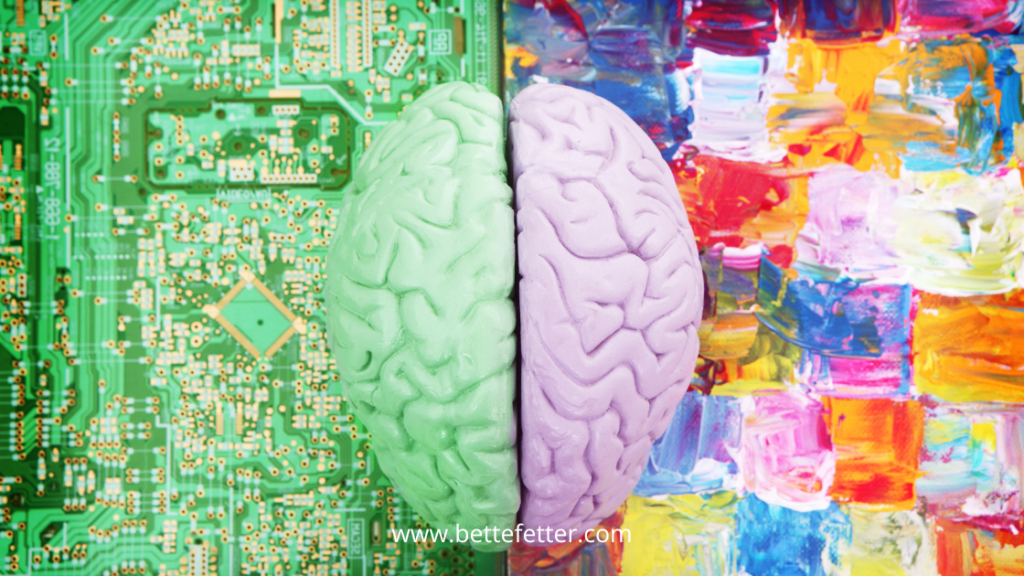Right Brain vs. Left Brain: What Every Parent Should Know

In the world of parenting and education, you’ve probably heard about the idea of being “right-brained” or “left-brained.” This concept, rooted in how our brains work, is often used to describe our children’s cognitive tendencies. But what does it really mean, and how can it help you understand and support your child’s unique abilities?
The Right Brain-Left Brain Myth
Before we dive into what every parent should know about right brain and left brain dominance, let’s clear up a common misconception. I often write about the idea that the left brain is all about logic and analysis, while the right brain is all about creativity and artistry. However, this is a bit too simplistic.
It’s important to understand that both sides of the brain work together in most activities. The left hemisphere is associated with language, logic, and math skills, while the right hemisphere is linked to creativity, intuition, and spatial abilities. Most tasks involve a mix of both hemispheres, and it’s uncommon for someone to be entirely right-brained or left-brained.
Understanding Dominance
Even though the right brain vs. left brain idea is a simplification, some people do lean more towards one type of thinking than the other. This leaning can affect how they process information, solve problems, and express themselves. Recognizing your child’s dominant thinking style can help tailor their learning experiences to suit their strengths.
Right Brain Dominance
- Creativity: Right-brained thinkers are often creative, imaginative, and innovative. They might excel in artistic activities like painting, drawing, and music.
- Spatial Skills: They tend to have strong spatial abilities, which help them understand and visualize complex spatial relationships in math and science.
- Emotional Intelligence: Right-brained thinkers may be more empathetic, intuitive, and socially attuned. They are usually driven to connect with others in both learning and life.
Left Brain Dominance
- Logical Thinking: Left-brained thinkers are often logical, analytical, and detail-oriented. They may shine in the facts and formulas of math and science.
- Language Skills: They typically have strong language and communication skills, making them skilled at reading, writing, and verbal reasoning.
- Critical Thinking: Left-brained thinkers might excel at problem-solving and reasoning.
What Every Parent Should Know
Your Child’s Brain Is Unique: Every child is different, and their brain dominance can vary. It’s crucial to recognize and embrace their individual strengths and weaknesses.
Balance Is Key: While understanding your child’s brain dominance is helpful, it’s equally important to encourage a balanced development. Foster both creative and logical skills to help your child become a well-rounded individual.
Observe and Encourage: Pay attention to your child’s interests and natural inclinations. If they show a passion for art, music, or creativity, support their artistic endeavors. If they excel in math or science, encourage their analytical and logical thinking. Don’t forget to encourage them to stretch into their less dominant skills as well.
Learning Styles Vary: Tailor your child’s learning experiences to their unique preferences. Right-brained children may benefit from hands-on and artistic activities, while left-brained children might thrive in structured and analytical learning environments.
Celebrate Diversity: Emphasize the value of both right-brained and left-brained thinking in society. Teach your child that diversity in thought and skills is what makes the world a vibrant and innovative place.
Avoid Stereotyping: Be careful not to label your child based on their brain dominance. Avoid statements like “You’re not the creative type” or “You’re not good at math.” Encourage them to explore a wide range of interests and activities.
While the right brain vs. left brain dominance concept is a simplified representation of brain function, it can offer insights into your child’s strengths and interests. By nurturing a well-rounded development that supports both creative and analytical skills, parents can help their children thrive and adapt to various challenges and opportunities throughout their lives. Celebrating the diversity of thought and abilities is key to raising confident and successful children.










